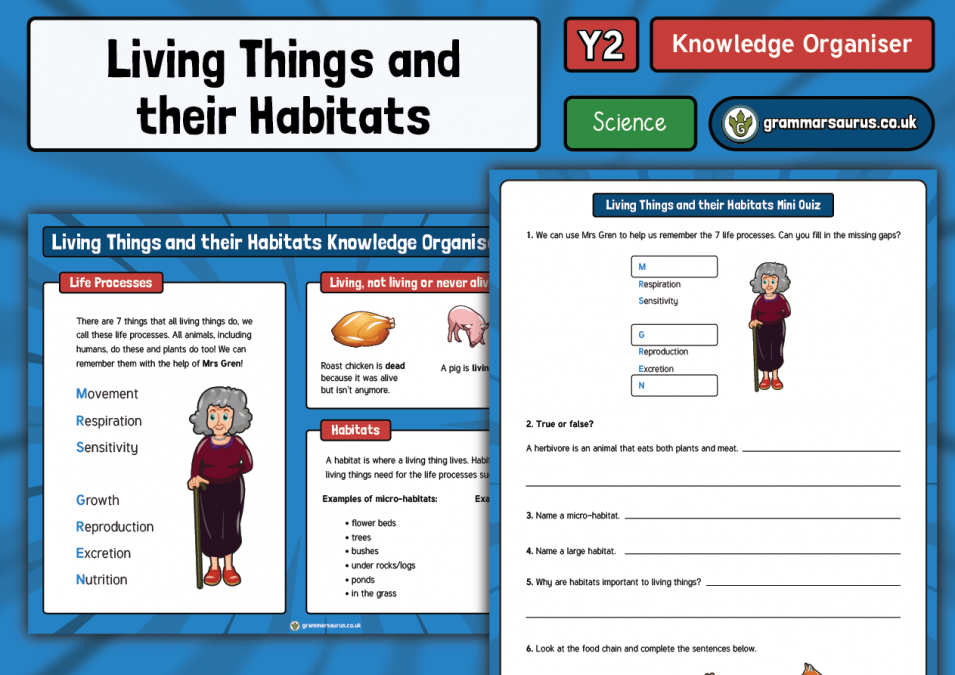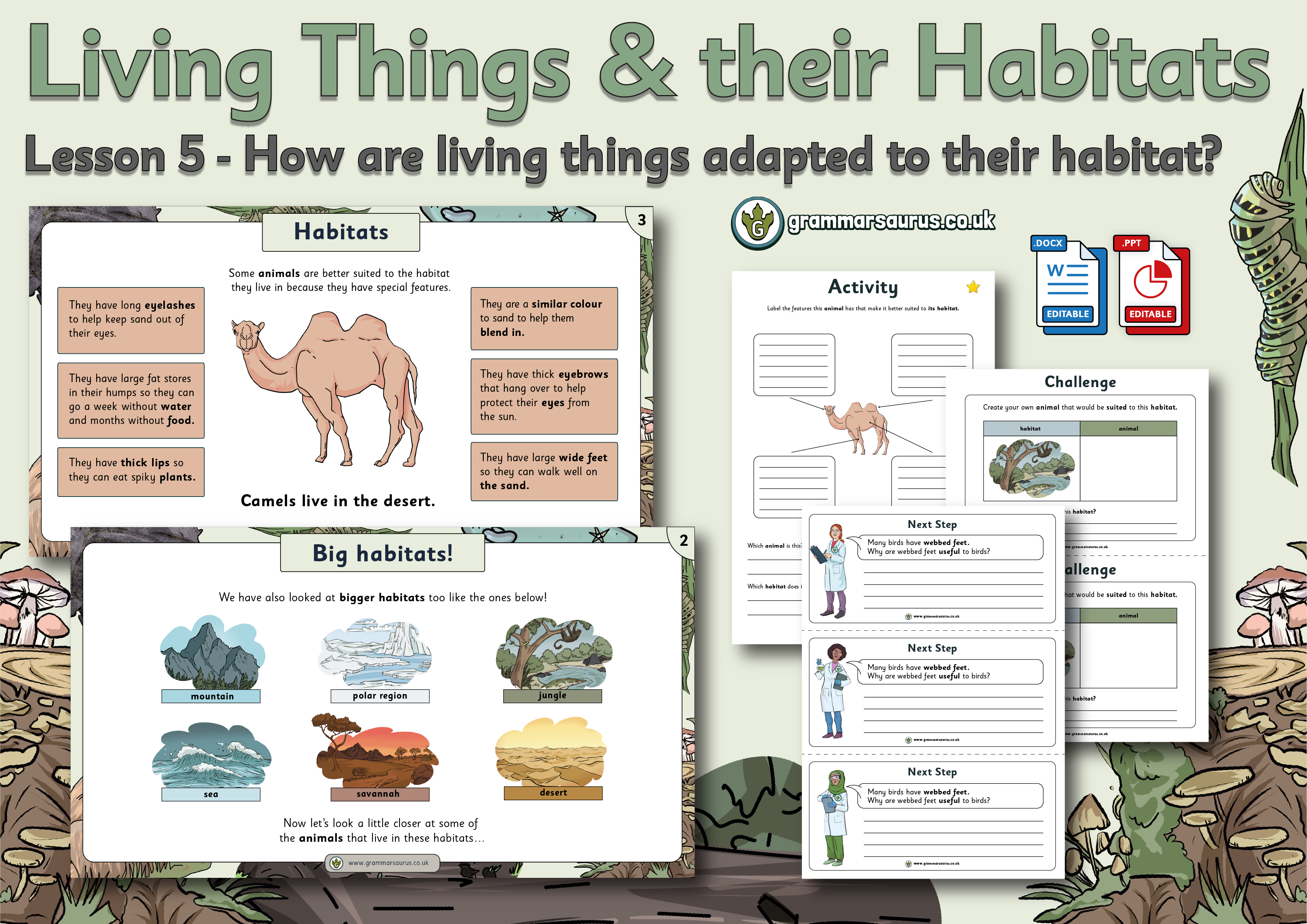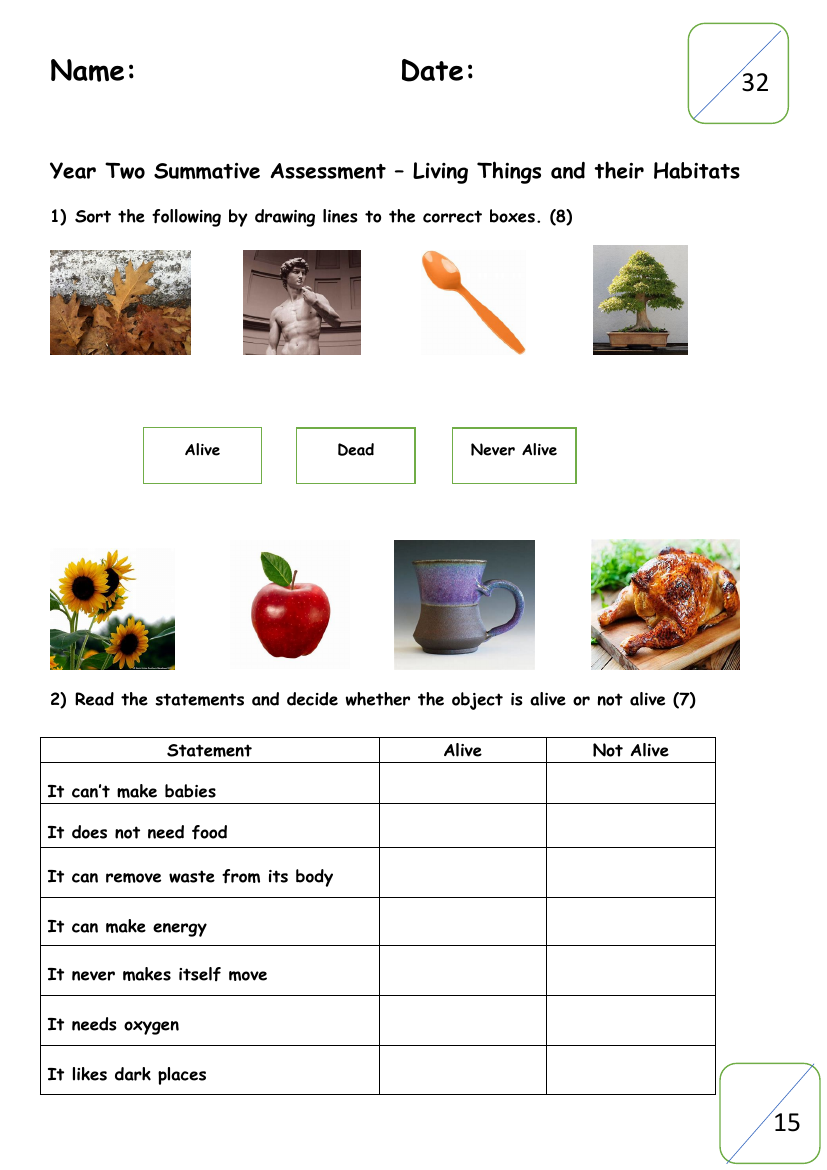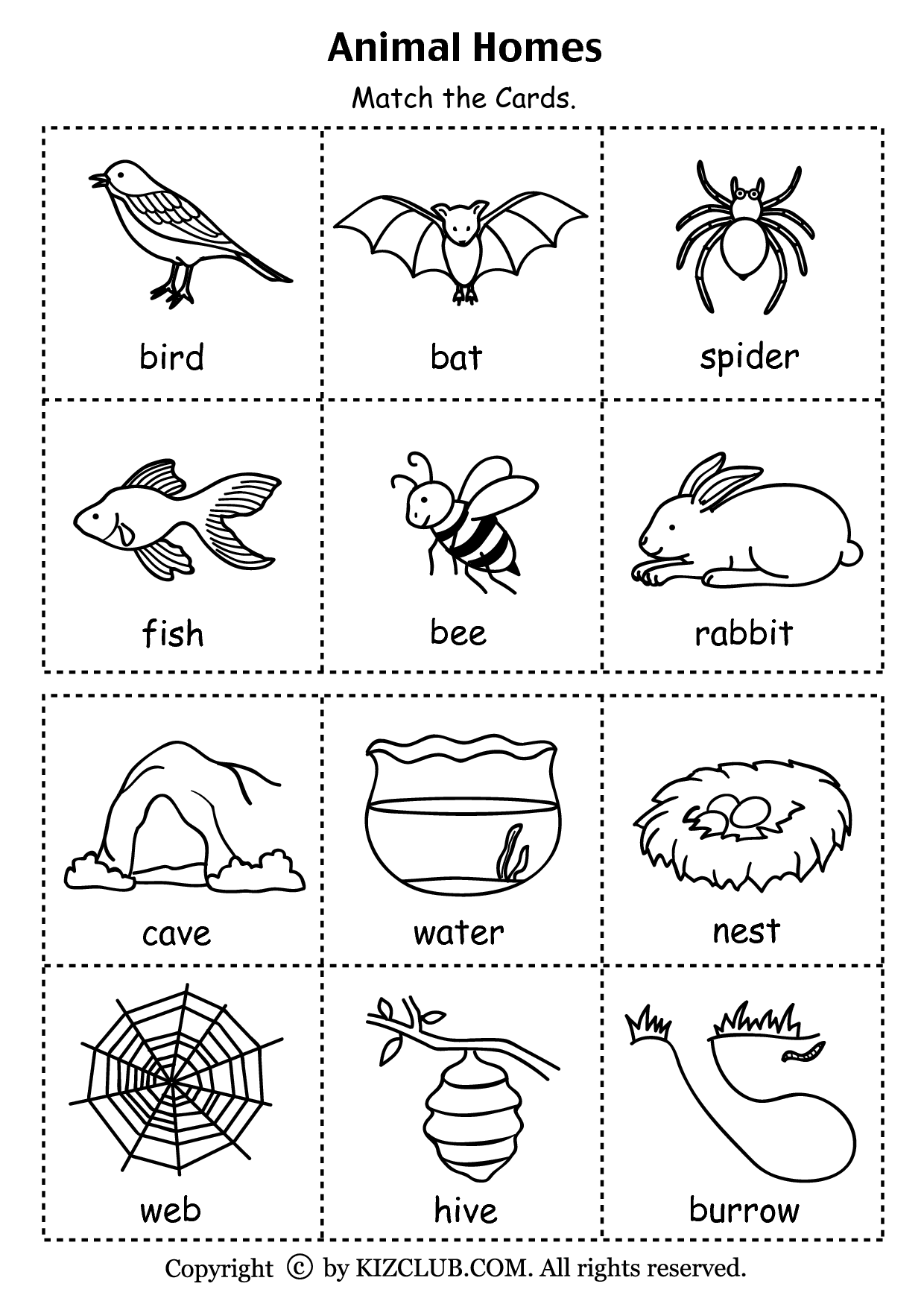
Living Things and Their Habitats Activities Apple For The Teacher Ltd
Year 2 Living Things and Their Habitats objectives include the following: explore and compare the differences between things that are living, dead, and things that have never been alive; identify that most living things live in habitats to which they are suited and describe how different habitats provide for the basic needs of different kinds.

Year 2 Science Living things and their Habitats Knowledge Organiser
Help children learn about animals, plants and their environments in Year 2 Science with the Living Things and their Habitats topic collection. You'll find helpful, easy-to-use resources like PowerPoints, worksheets and display materials - created by teachers following the 2014 National Science Curriculum.

Living things and their habitat bundle year 2 Teaching Resources
Statutory Requirements. 2a1: explore and compare the differences between things that are living, dead, and things that have never been alive. 2a2: identify that most living things live in habitats to which they are suited and describe how different habitats provide for the basic needs of different kinds of animals and plants, and how they.

Year 2 Science Living Things and their Habitats How are living
All Worksheets; year-2; Science; Assessments; Y2 Living things and their habitats assessment; Prev Next. Year 2 Science. 1. Y2 Living things and their habitats assessment. Year 2 Science. 2. Y2 Plants assessment.. Living things and their habitats. Max Possible Score: 24. Age Range: 6 - 7. Colour. Colour; Black & White.

Year 2 Science Living things resource pack powerpoints, planning
This website and its content is subject to our Terms and Conditions. Tes Global Ltd is registered in England (Company No 02017289) with its registered office at Building 3, St Paul's Place, Norfolk Street, Sheffield, S1 2JE. Presentations, worksheets and activities for primary students studying living things and their habitats.

Year 2 Living Things and their Habitats Knowledge Organiser! Teaching
Our year 2 science worksheets cover the core areas of the science curriculum including physical processes, uses of everyday materials, plants and animals, and much more. Your child will have fun learning about the life cycle of a butterfly and understanding basic circuits. We also have word searches related to force and movement, materials, and.

Living Things and their Habitat Assessment Science Year 2
The different habitats we find around the world are captivating for children and this interactive activity with stunning photographs taps into this fascination. A great topic for home learning, this engaging Interactive PDF activity covers national curriculum aims for the Year 2 Living Things and Their Habitats science unit. With no need for printing, children simply select the correct answer.

Year 2 Science Vocabulary Living things and their habitats Primary
Featuring PowerPoint presentations, worksheets and games, perfect for teaching about living things and their habitats to Year 4 students. Using interactive games and colourful, hand-drawn illustrations, this unit pack is a really engaging tool to use when teaching your children all about living things and their habitat.

This brilliant unit pack includes all the lesson packs and home
Easy-to-use resources, illustrated to engage and excite Year 2. You'll find fact sheets, games and sorting activities, as well as a word search, map activity sheet and 'living, dead or never alive' activity sheet. These all help your children work towards learning objectives for Science in KS1. In this lesson, your pupils will learn about the.

Year 2 Science Living Things and their Habitats Is it living, dead
Check children's knowledge of the basic needs of living things with this worksheet. Can they sort the basic needs based on whether they apply to. More info. Quick View. Things That Used to be Alive (Year 2). Super Senses — How Animals are Suited to Their Habitats (Year 2) Living Things; Key Stage 1 Science; PDF;
Animal Habitats Worksheets for Grade 14
Science Year 2. Habitats. How can we work out what's alive and what's not? Collect specimens and sort them into categories. Investigate habitats and food chains. Design and make a bug hotel that contains a variety of micro habitats to encourage a range of creatures.

7 Second Grade Habitat Worksheets /
Science: Living Things and Their Habitat: Making New Plants 1 Year 5 Lesson Pack 1. 4.5 (12 reviews) Science: Living Things and Their Habitats: Making New Plants 2 Year 5 Lesson Pack 2. 4.9 (8 reviews) Science: Living Things and Their Habitats: Microorganisms Year 6 Lesson Pack 4. 4.9 (25 reviews)

Year 2 Science Living Things and their Habitats Habitats Around the
Habitats: writing for science. Three great resources to help you meet the learning outcomes for living things and their habitats. Classifying animals parts 1 and 2. In part 1 children will classify vertebrates and invertebrates from a woodland habitat. In part 2 children will further classify vertebrates from a woodland habitat.

Living things and their habitat bundle year 2 Teaching Resources
Year 2: Living things and their habitats. This list consists of lesson plans, activities and video clips to support the teaching of living things and their habitats at Year Two. It contains tips on using the resources, suggestions for further use and background subject knowledge. Possible misconceptions are highlighted so that teachers may plan.

Printable Animal Habitats Worksheets
Lower ability to draw each food chain on a worksheet; higher ability to draw each food chain in their books Extension: Children to try to find all of the possible food chains. To access the complete Year 2 Living things and their Habitats planning, and all of the resources needed to teach it, visit:

Habitats and Biomes Worksheets Have Fun Teaching
This brilliant unit pack includes all the lesson packs and home learning resources included in the PlanIt Science unit 'Living Things and Their Habitats' for Year 2. In this unit children will learn about a variety of habitats and the plants and animals that live there. They will learn to tell the difference between things that are living, dead and things that have never been alive, and apply.